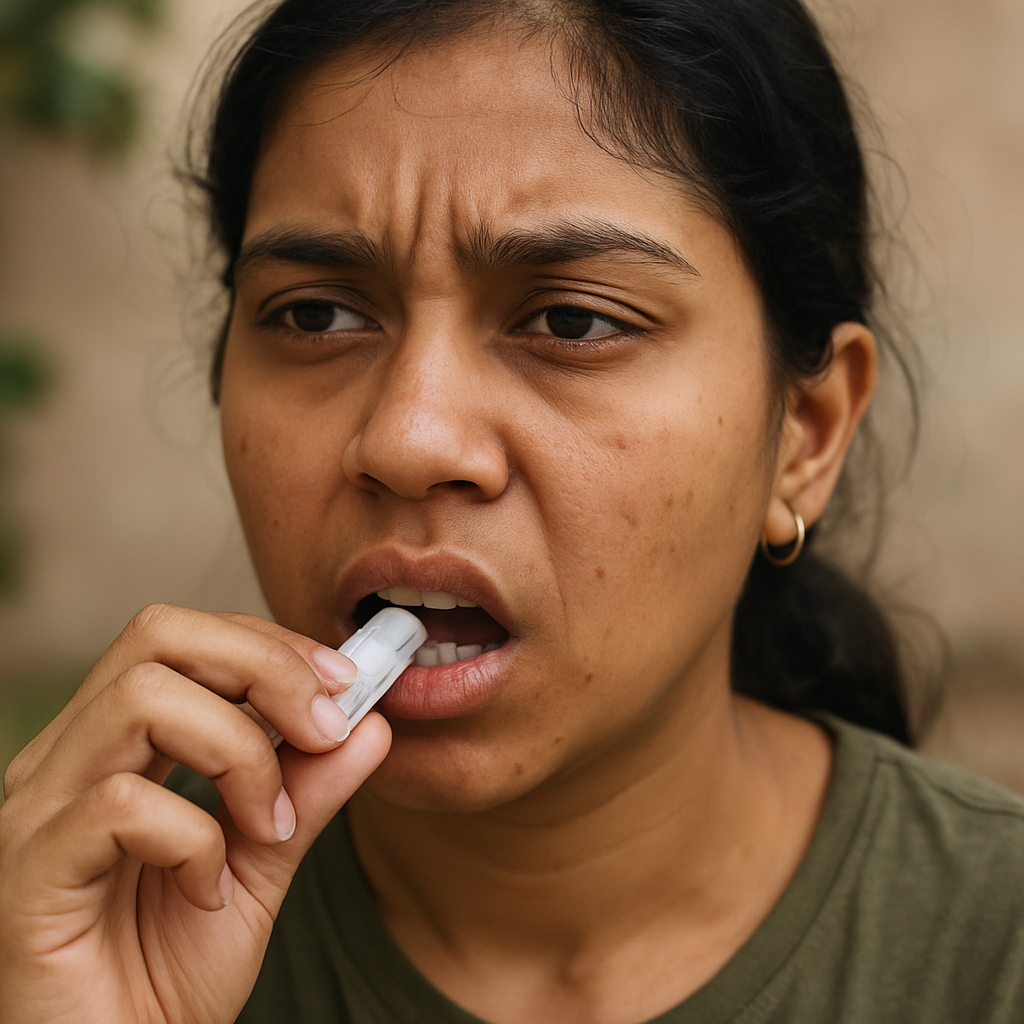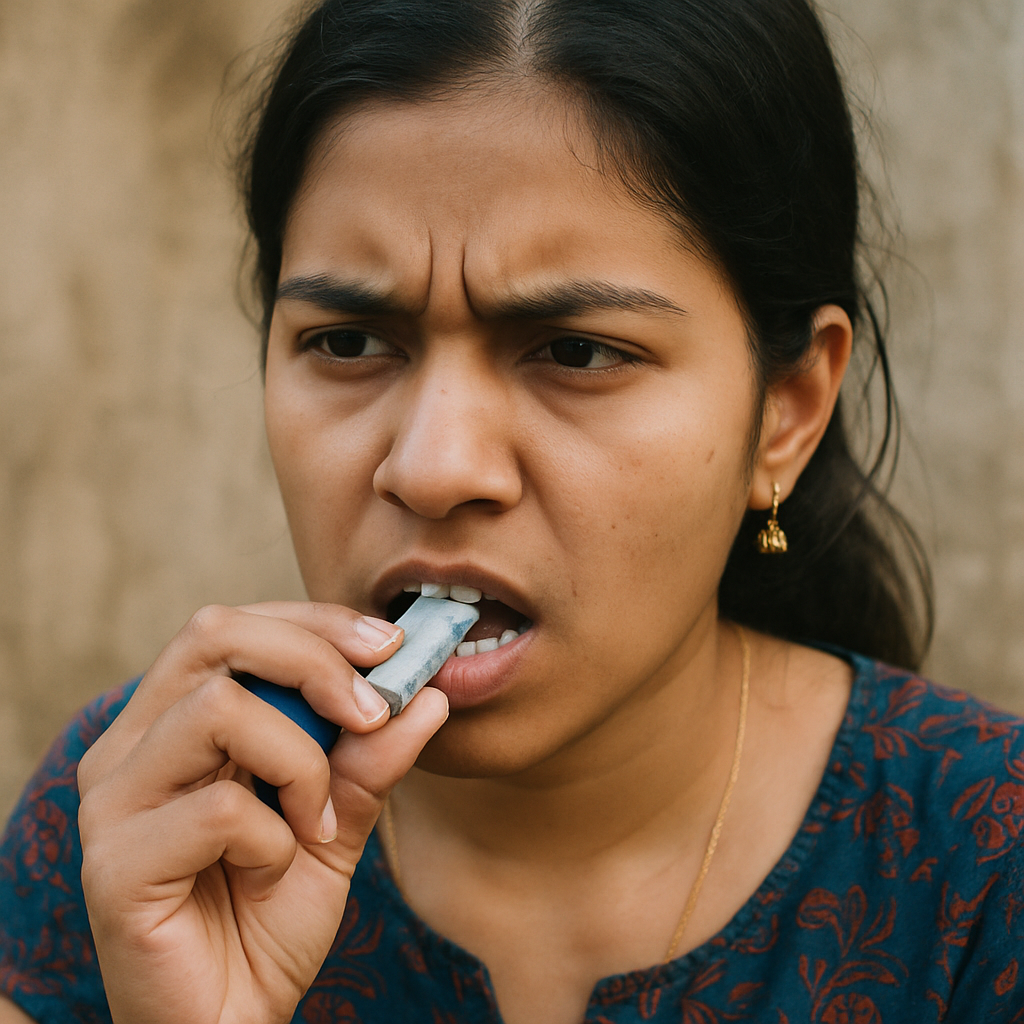Ask Ayurvedic doctor a question and get a consultation online on the problem of your concern in a free or paid mode. More than 2,000 experienced doctors work and wait for your questions on our site and help users to solve their health problems every day.
Shop Now in Our Store
What Are the Diseases Caused by Eating Slate Pencil?

It might sound strange at first, but eating slate pencils is more common than you'd think. Whether it’s a craving, a habit, or something that just “feels good” to the person doing it — this behavior can be dangerous. People often don’t realise how harmful it can be until they’re already dealing with side effects of eating slate pencil regularly. From digestive issues to nutrient depletion, this habit poses real health risks. In this article, we’re diving into the reasons people eat slate pencils, what happens inside the body when they do, and how it can lead to actual diseases over time.
If you’ve ever wondered “is eating slate pencil harmful?” or heard someone say “eating slate pencil is good or bad — I’m not sure”, keep reading. We’ll also look at how Ayurveda views this habit and how to stop it in healthy, natural ways.
Why Do Some People Eat Slate Pencil?
Though it might sound odd to many, there are surprisingly deep-rooted reasons why some people — particularly women and children — end up chewing or even swallowing slate pencils. It’s not always just a random habit. Sometimes, the body is trying to signal something more serious going on underneath.
Psychological and Nutritional Cravings
One of the main explanations lies in a condition called Pica — a psychological disorder characterized by cravings for non-food items like clay, dirt, chalk, or slate pencils. While some may develop the habit out of boredom or stress, others are genuinely dealing with nutritional deficiencies, especially iron and calcium. For instance, an anemic individual may start craving slate pencil without knowing that it’s their body’s way of screaming “I need minerals!”
Of course, eating slate pencils won't solve these issues. In fact, it only leads to more problems. But the brain makes odd associations when it’s deprived of what it needs. The smooth texture, the dry crunch, even the earthy taste – it can feel comforting in a strange, subconscious way.
Ayurvedic View on Unnatural Eating Habits
Ayurveda, the ancient Indian system of medicine, calls these unusual cravings “Apathya Aahar” — unnatural, non-beneficial foods that go against the body’s natural harmony. According to Ayurvedic principles, eating slate pencils can disturb the doshas (Vata, Pitta, and Kapha), causing imbalances in the digestive fire or Agni.
The craving might stem from an imbalance in the Vata dosha, often associated with dryness, anxiety, and poor nutrient absorption. Ayurveda suggests that correcting dietary habits, detoxifying the body, and balancing doshas can help stop the desire to consume such substances.

Side Effects of Eating Slate Pencil
So, is eating slate pencil harmful? Unfortunately, yes — and in more ways than one. Many people ignore the risks at first, brushing it off as a “weird phase” or harmless craving. But the side effects of eating slate pencil can stack up quickly, especially if the habit goes on for weeks or months.
Digestive Issues and Internal Irritation
Slate pencils are not food. They’re not meant to be digested, and your body knows it. Consuming them can cause bloating, constipation, stomach cramps, and in some cases — even intestinal blockage. People who eat them regularly often report a constant feeling of heaviness or unease in the stomach area. Sometimes it’s brushed off as acidity, but the real culprit is the slate pencil eating side effect they never thought to question.
There have also been cases where the sharp edges of a pencil fragment irritated the stomach lining, leading to inflammation or ulcers over time. This isn't just uncomfortable — it’s outright dangerous.
Impact on Bones, Teeth, and Calcium Levels
Ironically, many people eat slate pencils because they think it "tastes like calcium." But regularly chewing on hard materials wears down tooth enamel, causes micro-fractures in molars, and puts extra pressure on the jaw. It can even lead to TMJ (temporomandibular joint disorder) in extreme cases.
What’s worse, this habit doesn't actually help calcium levels — it may make them worse. Slate pencils contain minerals that can block the absorption of iron and calcium from real food. So, instead of helping your body, it’s doing the exact opposite.

Diseases Caused by Eating Slate Pencil Regularly
Okay, so you get the side effects. But what about full-blown diseases? That’s where things get real serious. Over time, eating slate pencil can do way more than cause a little stomach trouble or a broken tooth. We're talking about long-term damage to organs, chronic nutrient loss, and health conditions that might take months or even years to recover from.
Gastrointestinal Disorders and Toxicity
One of the biggest risks is the damage done to the digestive tract. Repeated intake of slate pencil can lead to gastrointestinal disorders like chronic constipation, gastritis, or intestinal obstruction. Imagine tiny, hard particles constantly scraping or sitting inside your gut — not exactly the best scenario.
And depending on the source and composition of the slate pencil, some can contain toxic substances like lead or other heavy metals. Long-term exposure to these can mess with the liver and kidneys, two organs that work hard to filter out toxins. When they’re overloaded, the whole system starts to break down. This isn’t just a minor slate pencil eating side effect — it’s a real threat to health and life quality.
In some rare cases, there's even been discussions around the idea that certain additives or impurities in industrial-grade slate pencils could trigger carcinogenic effects over time. Is there a 100% proven link to cancer? Not clearly. But the risk is not worth taking, especially when alternatives exist.
Nutrient Deficiencies and Organ Damage
Perhaps one of the most underrated but impactful consequences is nutrient deficiency. You might not feel it right away, but the long-term impact of slate pencil consumption includes reduced absorption of vital nutrients like iron, calcium, and magnesium.
Anemia is common in people with this habit. It starts with feeling a little tired all the time, then worsens to dizziness, hair fall, and mood changes. Over time, organs don't get the oxygen they need, and that can affect everything — from brain function to your immune system.
In women, especially during pregnancy, the disadvantages of eating slate pencil are even more severe. Both the mother and fetus could suffer from low birth weight, developmental delays, and other complications due to poor nutrient supply.

Ayurvedic Ways to Stop the Habit of Eating Slate Pencils
Now that we’ve covered the “why” and the “what happens,” let’s talk about how to stop. While modern medicine can diagnose and treat the physical damage, Ayurveda offers gentle, long-term solutions that work from the inside out.
First, Ayurveda suggests identifying and correcting imbalances in the doshas. As mentioned earlier, most cravings for inedible things like slate pencils are related to Vata and Pitta dosha aggravation. These imbalances can be pacified with warm, grounding foods, herbal teas, and digestive tonics like Triphala or Ashwagandha.
Some practitioners also recommend a panchakarma detox, which clears toxins from the body and resets the digestive system. It’s a more intensive option, but effective for people with long-standing habits.
Diet-wise, increasing your intake of natural iron and calcium-rich foods is key. Think leafy greens, sesame seeds, ragi, dates, almonds, and figs. If the craving is psychological or stress-related (which it often is), practices like meditation, yoga, or even journaling can help rewire those impulse triggers.
And here's a lesser-known tip: chew saunf (fennel seeds) or roasted flaxseeds when cravings strike. They keep your mouth busy and slowly reduce the urge.
Conclusion
So, let’s wrap this all up. Eating slate pencils might seem like a harmless habit, especially when it starts off small — just one here and there, maybe out of curiosity or craving. But as we’ve explored, the slate pencil eating side effects can turn serious pretty fast. From digestive problems and dental damage to nutrient deficiencies and even organ issues, the disadvantages of eating slate pencil are plenty.
The key thing to remember is: this habit doesn’t exist in isolation. It’s often a symptom of something deeper — like iron deficiency, stress, or emotional unrest. Whether you’re personally struggling with it or know someone who is, compassion and awareness go a long way. And luckily, there are natural, holistic ways to stop the habit before it leads to something worse.
If you’ve been wondering whether eating slate pencil is good or bad, the answer’s clear. While the immediate “feel-good” sensation might be tempting, the long-term effects make it definitely not worth it.
Take the first step. Start by noticing the cravings, getting your nutrient levels tested, and maybe trying a few Ayurvedic remedies. And hey — if this article helped even a little, share it with someone who might need it. It might just help them quit before the damage begins.
FAQs
Why do I crave slate pencils and how do I stop?
Cravings for slate pencils can come from a condition called Pica, which is linked to iron deficiency, calcium loss, or even emotional stress. Your body might be trying to tell you that something's off nutritionally.
To stop, first get a blood test to check your iron and calcium levels. Once any deficiency is treated, the cravings usually reduce on their own. Also, try replacing the texture with safer options like fennel seeds, sesame chikki, or even crunchy roasted chickpeas. If it’s emotionally triggered, talk to a mental health professional or practice stress-reducing habits like yoga, walks, or art. Don’t beat yourself up – it’s more common than people admit.
Can slate pencil eating cause cancer or major diseases?
There’s no solid proof that eating slate pencils directly causes cancer. However, some pencils may contain harmful additives or trace metals like lead, which, over long periods, could be toxic. Also, constant internal inflammation (like ulcers from sharp bits of pencil) may, in theory, contribute to other complications.
More than cancer though, the real concern is chronic damage — to your stomach, teeth, liver, and kidneys. It's best to nip the habit in the bud rather than risk something long-term.
How does Ayurveda explain this craving or condition?
Ayurveda views this as a result of imbalanced doshas, especially Vata and Pitta, which can lead to strange food cravings. These imbalances can arise from poor digestion, stress, irregular eating patterns, or malnutrition.
To treat it, Ayurveda recommends detoxifying the body with herbs like Triphala, practicing grounding activities, and eating nutrient-rich whole foods. Amla juice, Guduchi, and Ashwagandha can help too. But make sure to consult a certified practitioner before starting anything new.
Final Thought:
If you're still wondering “is eating slate pencil harmful?”, just remember this: your body is trying to communicate with you — listen. Don’t ignore the signs, and don’t feel ashamed to ask for help. Everyone has quirks, but some habits need a little more attention than others.
👉 If this article gave you insight or support, please share it. You never know who else might need to read it today.
This article is checked by the current qualified Dr Sujal Patil and can be considered a reliable source of information for users of the site.

